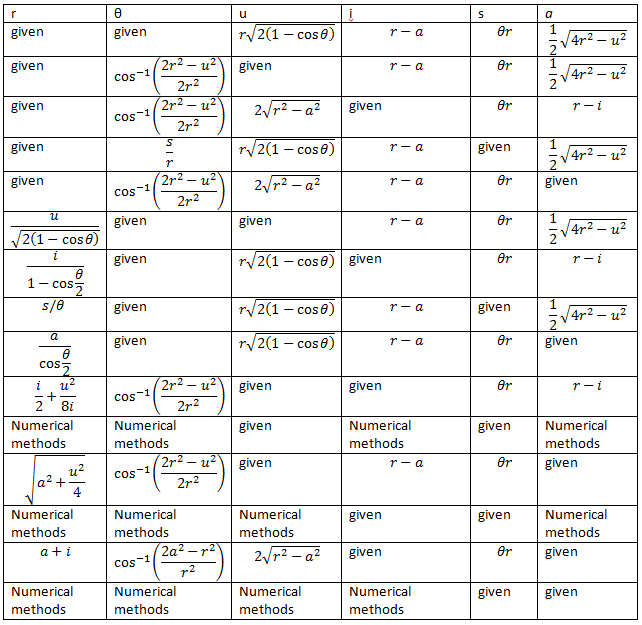There are a number of simple cases for field measurement of a circle. A full circle can be measured across its diameter or around its circumference to determine its area. (To use the circumference to determine the area, first use the formula C = 2πr to determine the radius and then use the radius to determine the area which gives A = C2/(4π).) Half circles and quarter circles are similarly straightforward.
But suppose you want to measure a circular arc which has an unknown central angle, θ, such that 0 < θ < 180°. There are three things that are normally easy to measure for such circles and they only require a tape measure:
- 1. chord distance (also called the run of the arc – denoted u)
- 2. rise of the arc (i)
- 3. arc length (s) – arc length measurements are easy for existing items if there is a (normally vertical) surface to hold the tape against; not as easy for proposed items unless approximation is acceptable
The following diagram illustrates:
There are number of reasons why you might be interested in the rise, run approach to defining a circular arc. If you are laying out an arc, it may be infeasible to run a tape measure around the center point of the arc – perhaps due to the size or interfering objects. Also, measuring unusual angles requires specialized equipment (such as a transit) which requires set up time. (If you are using a total station this whole discussion is moot, so we are assuming we’re trying to do something without it.) The rise/run approach is also the approach used in some blue prints for defining curved walls. Carpenters and linear measurements are on good working terms, and we like to leverage this where we can.
But whatever the reason you might want to use this approach, you can calculate both ways. First of all, let’s list all of the relevant equations:
Now, let’s suppose we know u and i. We determine the remaining variables from these.
Manipulating equation (4):
So, we need a and θ (or at least cos θ) to find r, which we do by manipulating equations (1) and (3).
Manipulating equation (3):
Manipulating equation (1):
Substitute (6) and (7) into equation (5):
Now that we have r we can use that number in equation (7) to find θ, etc. I omit all of the rest of the gory details, but here are the final results for solving the unknowns in terms of different combinations of known values (note that θ is understood to be in radian measure and the reader is left to discern what order to calculate the different values in).



















No comments:
Post a Comment